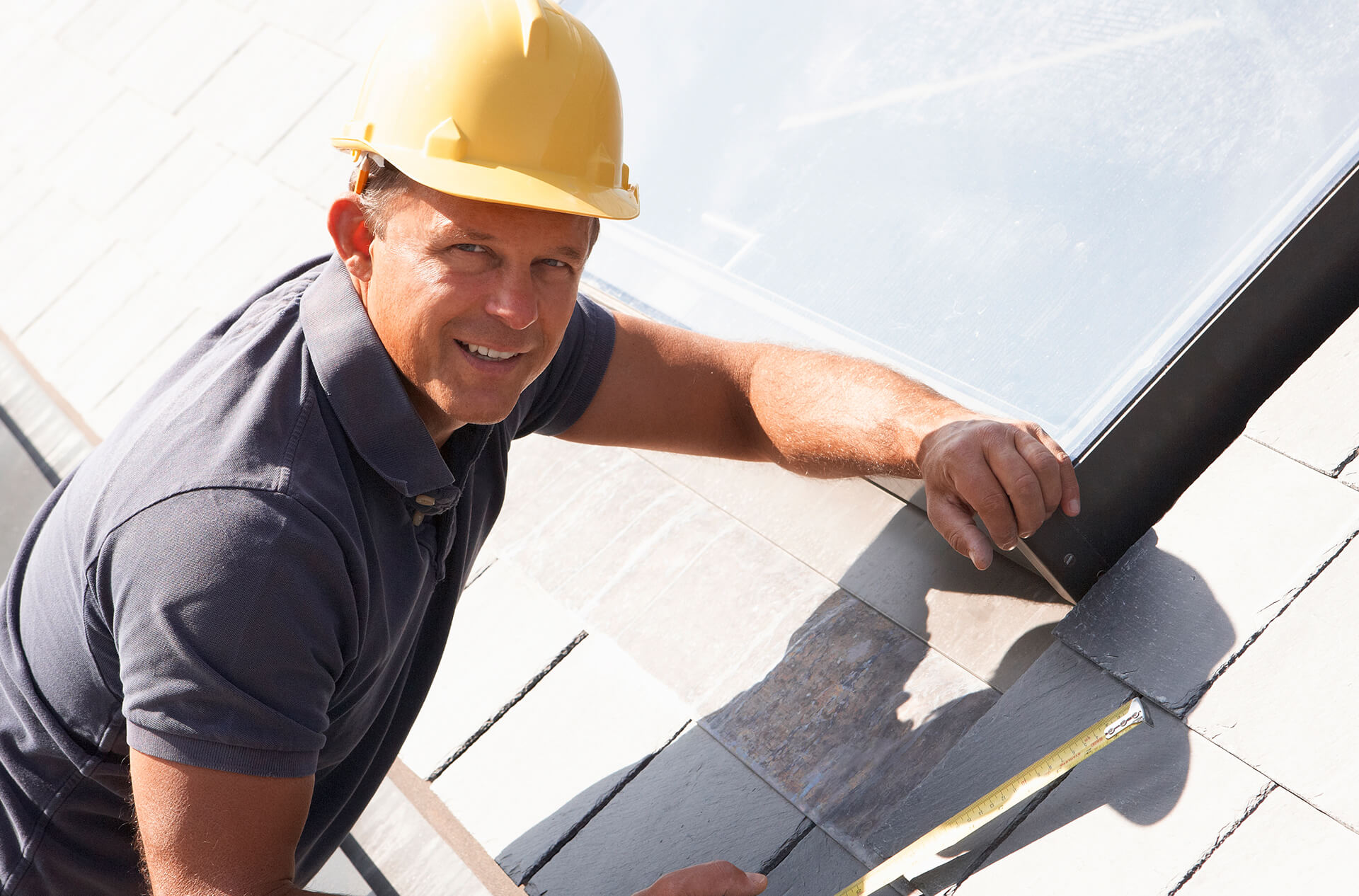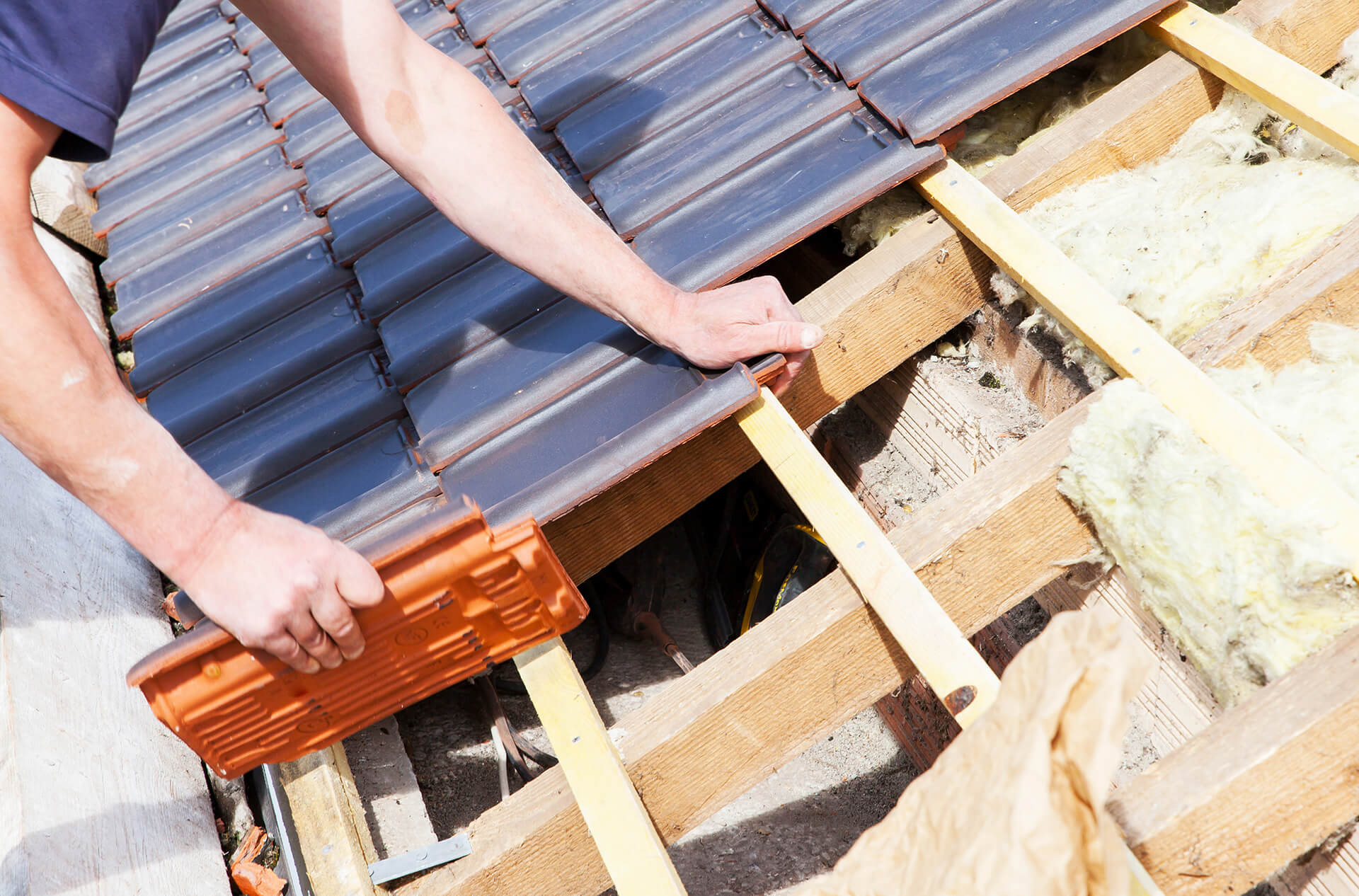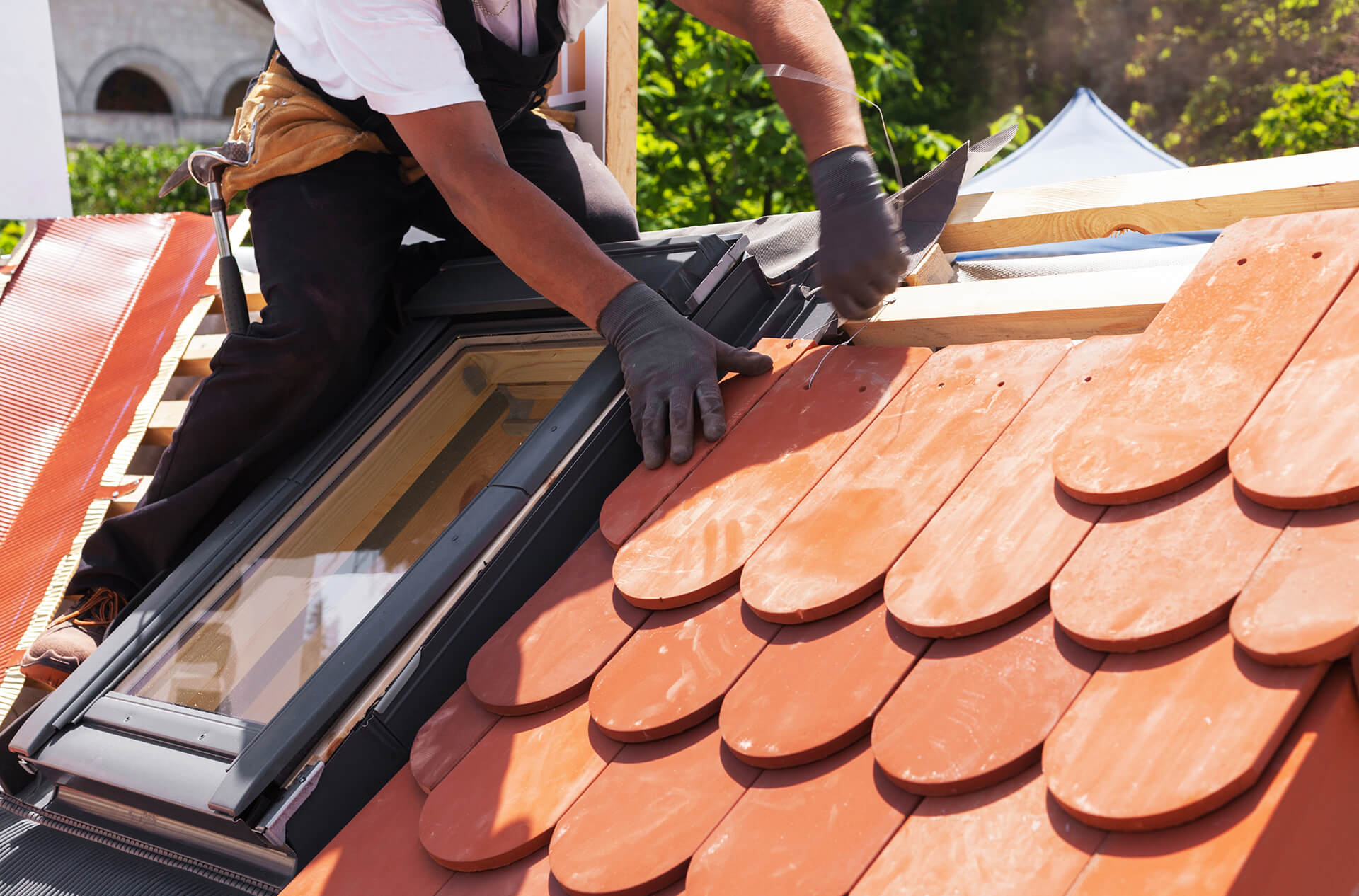Flat Roof Wakefield
A flat roof is a roof that is completely, or almost level. However, whilst they are described as ‘flat’ almost all flat roofs are actually laid to a fall to ensure that rainwater can run off to the lower side. The most obvious advantage for flat roofs is the cost: the materials are cheaper, as they don’t need to have as much “curb appeal”; the labour is cheaper because there is less risk in installing them; and these roofs are easier and quicker to install so there is less labour overall. They also have fewer complications in repair or damages, which makes for a lower cost over the roof’s lifespan. Flat roofing is both economic and efficient, which saves the owner energy and money. Its construction involves considerably less labour and materials than its pitched roof counterpart and full replacement can often take just a day. Flat roof or a low-pitch roof performs two functions – serving as the roof cover and at the same time serving as the ceiling over the top floor of a building.
Flat roofs are an aesthetically interesting and energy-efficient alternative to traditional sloped roofs. Although flat roofs pose several issues in comparison to sloped roofs, many homeowners and first-time home builders are looking increasingly favourably on flat roofs for several reasons. Flat roofs are generally versatile, easier to maintain, and more energy-efficient than most sloped roofs.
A properly maintained flat roof can last for decades, depending on the materials. A built-up roof or layers of modified bitumen can last for up to 20 years. Lightweight thermoplastic polyolefin or spray-on coatings of polyurethane foam, acrylic or silicon have a similar lifespan. The longest-lasting roof materials such as ethylene propylene diene monomer (EPDM) and polyvinyl chloride (PVC) roofing may endure for up to 10 more years than that, depending on the inspection and maintenance schedule.
There are some signs that allows you know if your flat roof is in need of replacing and some of these signs are:
- Design and installation.
- Tears, splits, cracks and exposed timbers.
- Adhesion failure, bubbling and blistering.
- Ponding, poor falls and small outlets.
Organic growth. - Adjoining walls and upstands.
Here also, are some tips to help you maintain your flat roof:
- Have it checked periodically. Many home and business owners neglect to inspect their roofs as often as they should.
- Keep it clean.
- Trim back nearby trees.
- Deal with leaks promptly.
- Watch the weight.
- Make sure you have a good drainage system in place.



Types of Flat Roofs
- Thermoplastic Membrane Flat Roof (PVC or TPO): This type of roofing is a single-ply layer of material fixed to the roof with screws and plates.
- They’re praised for their high-temperature tolerance and durability.
- There are two types of thermoplastic membrane roofing: polyvinyl chloride (PVC) or thermoplastic olefin (TPO).
- Build Up Roofs (BUR): Its exterior has a tar and gravel exterior texture which the installer builds up until there’s a dense layer of minerals and tar packed on the rooftop. It is a popular option amongst other types due to its reasonable cost and low maintenance needs. It also combats UV rays of light.
- Rubber Membrane Flat Roof (EPDM): This is a single-ply membrane consisting of rubber. It’s either glued down or anchored with fasteners or rocks. It’s considered the cheapest of all the roofing options to install or repair and it is also typically quick and easy to install.
- Modified Bitumen Flat Roof: A mod-bit roof is an asphalt-based sheet similar to the BUR in texture and appearance. It is installed in five layers. The installation of a modified bitumen roof is a long, labour-intensive process. It should be done by a professional every time. Though the installation can be arduous, the results are worthwhile.
- Spray-On Flat Roof: This roofing option is sprayed directly onto the roof just as the name implies. A spray-on roof can be quite costly but for good reason. It can conform to any roof shape easily and offers a near completely waterproof finish as it doesn’t have seams.
- Metal Flat Roof: Metal is another popular option for flat roofs. Typically, aluminium is the preferred material due to its malleability. But you can also choose from other metals such as tin, copper, steel, or zinc. This type of roof thrives in dry, warm climates.
- Green Flat Roof System: Green roofs are made from living plants. This unique option offers an aesthetically pleasing finish. They can even absorb air pollutants. Also note that there must be either a rubber or plastic base material as well as insulation below your green roof.
- Concrete Flat Roof: Concrete is a favorite option in flat roofing. They can withstand harsh weather and are fairly easy to maintain. But due to concrete’s porous nature, this type of roof can experience leaking issues.
The Pros of Flat Roofs
Lower construction and repair costs. Flat roofs take up less space and consequently use less material than sloped roofs. This makes initial construction cheaper but also means savings if any extensive repairs become necessary.
Versatility. Some homeowners turn their flat roof sections into rooftop gardens. Flat roofs are also ideal for roof deck construction. Homeowners can use a flat roof to add a beautiful addition that also provides additional weather protection.
Energy efficiency. Flat roofs are fantastic for keeping home utility costs manageable, especially in warmer climates. While sloped roofs can trap unwanted warm air or allow cooled air to escape, a flat roof means less overhead space for air to stagnate.

Faster and less disruptive installation process. Flat roofing systems, in general, take less time to complete. A plain structure means fewer materials and equipment to work with. If you are not ready and willing to face interruptions in roofing installations, choose a flat roof instead.
The Cons of Flat Roofs
Unreliable in cold weather. Flat roofs pose homeowners several issues in colder climates. Water is more likely to accumulate and pool on flat roofs, and ice dams can cause dangerous levels of snow and ice accumulation. If you plan to build with a flat roof in a colder climate, consult your builder for weatherproofing and material options.
Higher chance of early replacement. Most sloped roofs will last 20 or more years with proper care, but flat roofs generally need to be replaced every 10 years or so. The National Roofing Contractors Association reports that many homeowners switch to sloped roofs for this very reason.
“Green” roof concerns. While turning a flat roof into a garden space is a very eco-friendly and aesthetic choice, it can present problems over time with invasive plant roots. Without proper treatment, the plants can penetrate the roof and create leaking issues
Drainage problems. You’ll probably need to pay more attention to a flat roof because of potential drainage issues. Pitched roofs drain water easily. With a flat roof, you can anticipate puddling following a few days of rain if the roof itself isn’t properly planned or installed.

Costs of Flat Roofing
The cost of a flat roof can vary vastly depending on the size of your building and the type of roofing material you select. Generally, maintenance will range between $200 – $800 in total, however, this can change due to the state where the building resides and the roofing company performing the maintenance. These are estimates that won’t necessarily reflect the price that your flat roof could cost. There are many details to sort out, so your roof could cost significantly more or less depending on the conditions of the factors layed out in the contract.

Frequently Asked Questions
Is a flat roof sustainable?
Yes. Flat roofs, as a result of its many benefits, have proven to be highly sustainable.
How do flat roofs drain?
They use an interior system of pipes, which can be found below the roof, to carry water away from the home’s foundation. The drains are typically placed in the centre of the roof. The pipe system is protected by the roof and walls of the building. This minimises the pipes’ risk of bursting, cracking, or freezing.
How often should you reseal a flat roof?
Flat roofs, which are usually built up with layers of roofing felt and asphalt or coal tar, should be recoated every two to four years, unless they are covered by a layer of gravel or other stone chips.
